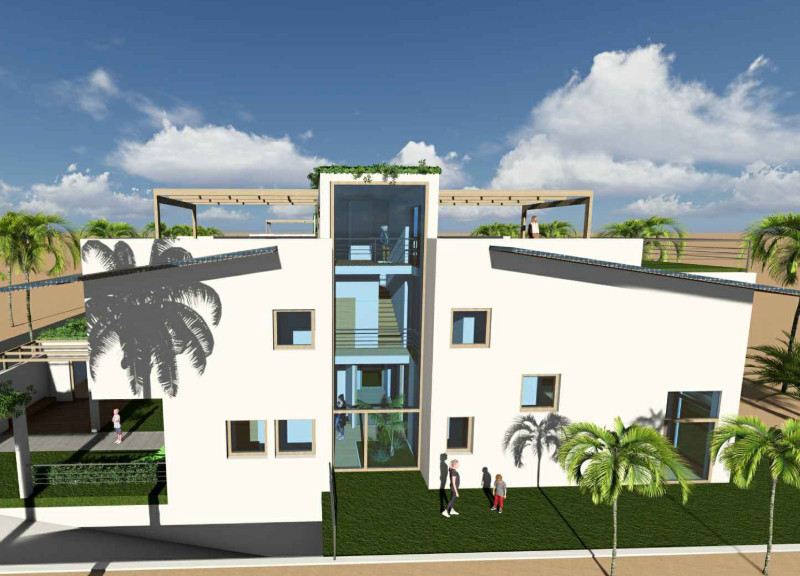5 key facts about this project
At its core, the project is designed to foster community interactions and promote well-being among its inhabitants. It functions as a multifunctional hub that accommodates various activities, catering to the needs of local residents and visitors alike. This versatility is achieved through an intelligent spatial organization, where different areas are carefully delineated yet interconnected, allowing for a smooth flow of movement throughout the building. The design prioritizes accessibility and inclusivity, ensuring that all users feel welcome and engaged within the space.
Significant attention has been paid to the building's massing and volumetric composition, which reflects the surrounding landscape while standing as a modern architectural statement. Large windows and transparent materials are strategically placed to maximize natural light, creating an airy atmosphere conducive to both productivity and relaxation. The façade is a crucial element, utilizing a blend of materials such as metal, glass, and sustainably sourced timber, thus contributing to the visual appeal while also addressing functional requirements like energy efficiency and durability.
Unique design approaches have been employed to define this project further. For instance, the integration of green roofs and living walls not only enhances the building’s aesthetic qualities but also contributes to biodiversity and environmental sustainability. These features promote ecological awareness while improving air quality and providing insulation benefits. The selection of materials extends beyond mere appearance; they are chosen for their sustainability credentials, aligning with contemporary architectural ideas that emphasize environmental responsibility in the built environment.
Interior spaces have been designed with a focus on adaptability, allowing the project to evolve with the needs of its occupants. Flexible layouts are complemented by movable partitions that can redefine spaces based on various functions, from collaborative work areas to private meeting rooms. The careful choice of furnishings and finishes enhances the user experience, creating inviting atmospheres that encourage social interaction, creativity, and productivity.
Moreover, the project reflects a deep understanding of its geographical context, drawing inspiration from local cultural elements and architecture. This sensitivity not only anchors the building within its locale but also enriches the inhabitants' connection to their heritage. The incorporation of local materials pays homage to the region’s architectural vernacular while ensuring that the building tells a story of its place.
For further exploration of this architectural project and to gain deeper insights into its design language, readers are encouraged to review the architectural plans, architectural sections, and architectural designs associated with the project. By delving into these elements, one can appreciate the nuances of the architectural ideas that make this project successful. The interplay between functionality, sustainability, and aesthetics encapsulates the essence of modern architecture, inviting readers to discover the potential that this project embodies in today’s architectural landscape.


 Stefano Esposito
Stefano Esposito 























